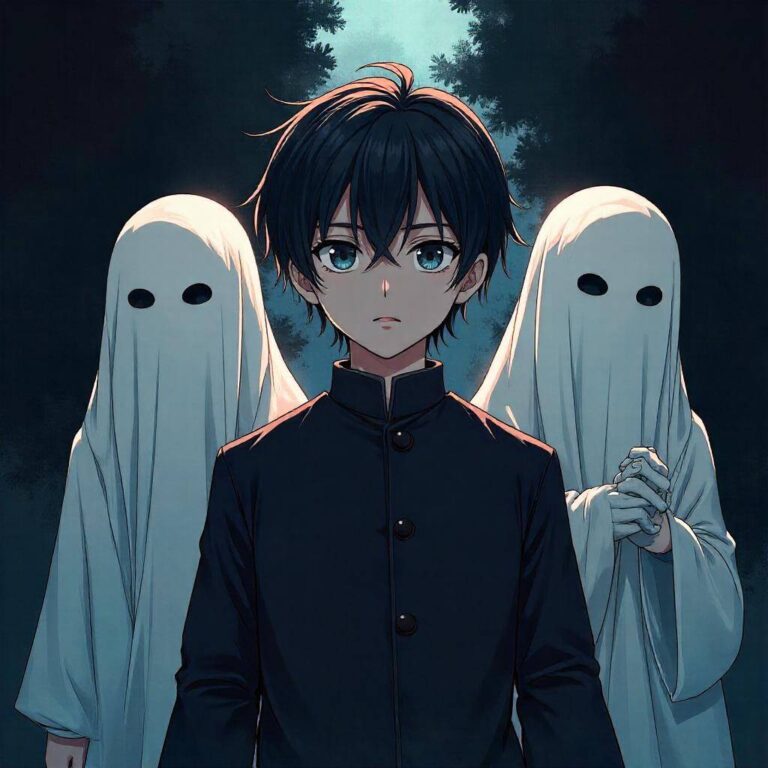Reader’s Question:
On page 46 of volume 21 of “Demon Slayer,” there is an illustration of the deceased Genya Shinazugawa embracing his family. I believe the person in the back, holding the mother’s shoulder, is the father who was known for domestic violence. Considering the father’s abusive history, I find it
strange that this illustration depicts such a close-knit family moment. What are your thoughts on this?
Diving into Family Dynamics in “Demon Slayer”
Ah, “Demon Slayer” – a series that has completely taken the anime world by storm! Between the breathtaking animation, gripping storylines, and unforgettable characters, it’s hard not to be swept up in its narrative. However, just like any piece of art, it’s open to interpretation, and sometimes that leads to some intriguing discussions among fans. Recently, a question popped up regarding an illustration on page 46 of volume 21. It shows the late Genya Shinazugawa embracing his family, but there’s a bit of a twist that’s got folks talking. Let’s dive into it!
Family Matters: A Closer Look at Genya’s Legacy
So, the illustration you’re referring to depicts Genya, who has tragically passed away, in a heartwarming moment with his family. The question arises—who exactly is the figure holding the mother’s shoulder? Some fans speculate it’s the father, known for his abusive behavior. Now, this brings a lot of complexity to the scene. I mean, how can you depict such a tender moment with a backstory like that? But here’s where it gets interesting. One user pointed out that the figures in the background are actually Genya’s siblings rather than his parents. Genya belonged to a large family of seven siblings, which is no small feat! The illustration is more about the bond and connection between brothers and sisters rather than the toxic parental figures. I find this interpretation refreshing. It really shifts the focus from the negativity of the past to the love and connection that can exist among siblings.
Understanding the Context
For those who might not be as familiar with Genya’s story, let’s give a quick refresher. Genya’s family history is a turbulent one. They faced immense hardship and trauma, primarily stemming from their father’s abusive nature. This context makes the family scene a bit of a double-edged sword—on one hand, it shows the warmth of family love, but on the other hand, it brushes over some pretty heavy themes. You could argue that the artwork captures a moment of reconciliation, perhaps even a fantasy of sorts. Maybe Genya is imagining a world where all his siblings are together, free from the pain that haunted them in life. It brings up a powerful theme often explored in anime and manga: the idea of family as both a source of strength and a reminder of pain.
Reflections on Family Ties
Reflecting on my own experiences, family can be a complicated tapestry of love, joy, tension, and sometimes pain. Just like Genya and his siblings, I have my own blend of family dynamics. I remember a time during a family gathering when old grievances resurfaced, and it reminded me how family isn’t just about blood; it’s about shared experiences, understanding, and growth. In a way, I believe “Demon Slayer” does a fantastic job of portraying these complexities. The characters navigate their traumas while still striving for connection. It’s not just about the blood ties but the ties formed through shared experiences. Genya’s tragic end doesn’t overshadow his relationships with his siblings; instead, it highlights how those bonds can transcend even the darkest of times.
The Power of Forgiveness
There’s a layer of forgiveness present in Genya’s depiction with his siblings. It’s intriguing to think about how, even after death, he might be seeking reconciliation with his family, leaving behind the scars of their past. I can’t help but draw parallels to real life—how many of us have had to navigate complex relationships with family members? It’s not always easy to forgive, and sometimes, we carry those weights longer than we should. I’ve found that discussing these themes within anime can spark some deep conversations with friends. We often find ourselves dissecting characters’ choices and the ramifications of their pasts, just like we do in our own lives. It’s a reminder that while Genya faced atrocious circumstances, he also had the opportunity to embody love and connection among his siblings, even in the afterlife.
Final Thoughts
In conclusion, the illustration of Genya with his family can be viewed through multiple lenses. While it’s easy to get hung up on the past—particularly the father’s abusive nature—I think the focus should shift to the love and bonds between siblings. They’re the ones who truly matter in this moment. “Demon Slayer” does more than just tell a captivating story; it challenges us to think about our relationships, our pasts, and how we can find a way to embrace love amidst the chaos. And let’s be real, whether it’s through an animated series or our own life stories, we all have the power to create moments of joy and connection, even if they’re tinged with a bit of sadness. So, what do you think about Genya’s illustration? Does it resonate with your own family experiences? Let’s keep the conversation going! After all, that’s what being a part of this anime community is all about—sharing our thoughts, feelings, and the stories that shaped us.



